News
The Power of Te Taiao (Nature) as a Metaphor for Design
Posted 03 07 2024
in News
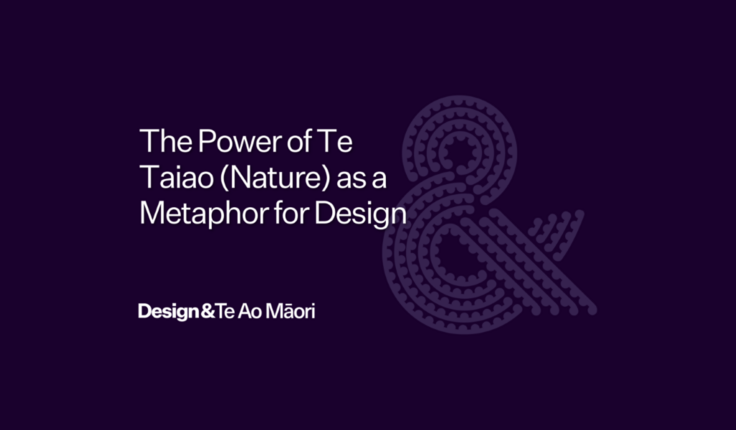
by Ashleigh Summerville
This article was originally published by the Design Assembly.
Nature and te ao Māori are words which feel relatively indistinguishable from one another, te ao Māori always articulating the deep dependency we feel on the flourishing or life force energy of Papatūānuku (Earth Mother). Our connection to the earth expressed through pūrakau (stories), practices and karakia (prayer).
These traditions an amalgamation of mātauranga (knowledge) and nature which conjure a unique perspective about the planet we live on and the systems which govern us.
Within te ao māori nature serves as a profound metaphor for our existence due to its complex, resilient, and diverse disposition. Nature symbolises renewal, growth, and the cyclical rhythms of life. In many ways the natural world mirrors the human psyche, representing the depths of consciousness and vast possibilities of human creation. Philosophically, nature is dually a prompt for contemplation and springboard for creativity.
Etymology Examples of Te Reo Māori and Nature Converging
- Tangata Whenua – people of the land
- Te Taiao – The natural world that contains and surrounds us — the land, water, climate and living beings. It refers to the interconnection of people and nature.
- Whenua – Māori word for land, dually meaning placenta.
All life is seen as being born from that of Papatūānuku.
- Aroha – Love, but it is a compound kupu (word)
Aro – thought, life, attention, focus on.
Ha – life force, breath, energy.
Aroha is the focus of breath/energy.
- Mokopuna – meaning grandchildren.
Moko – facial tattoo.
Puna – a spring or pool of water within which we see our reflection.
mokopuna is a reflection of ourselves.
- Ngahere – Forest
Nga – plural.
Here – to tie, tie up, fasten with cords, bind.
Ngahere is about the binding or connection of trees through their roots.
Natures Influence on Design Within a Te Ao Māori Context
Historically Māori have proved to be innate innovators. The sharing of intergenerational knowledge and the use of natural resources cultivating an atmosphere of purposeful creation which saw them living in harmony with the environment.
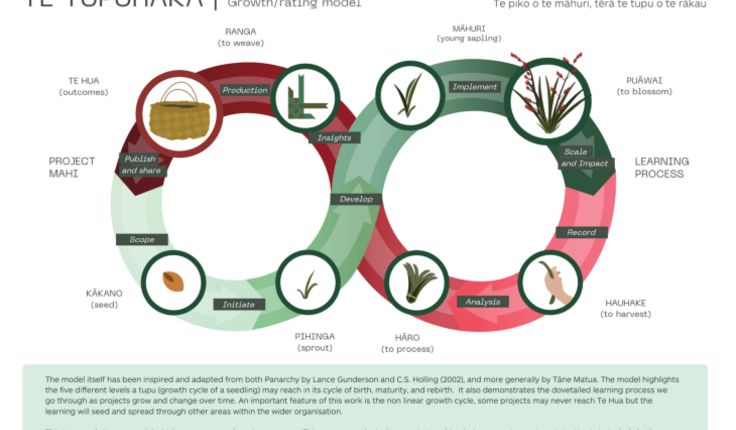
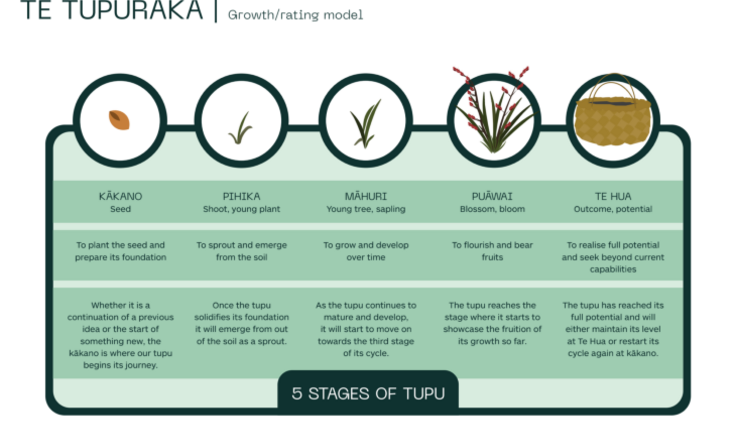
Drawing upon natural resources for generations to ideate and design in harmony with nature. To name a few:
- Harakeke (flax) – weaving, ropes, net making and medicine.
- Waka (canoes built from tree trunks) – vessels used for voyaging, and fishing.
- Hāngī (earth oven) – traditional Māori method of cooking, especially suited to preparing food for large numbers of people.
- Te kapehu whetū (Māori star compass) – divides the 360 degrees around a canoe in the open ocean into different whare (houses).
Nature as an Approach to Innovation, Design Solutions and Transformation Today
Our predecessors looked always toward nature as the blueprint for creation and success. Nature allowed them to understand systems, navigate complexity and imagine new horizons such as travelling across the seas using only the stars.
So, what does this mean in the context of today’s world and how can we benefit from designing in accordance with nature?
Drawing from the natural world around us can shift our perspectives, integrating ecological thinking into design solutions can challenge how we look at society. Looking at structures as an ecosystem of root cause and effect (the foundation of systems design) rather than in fragmented programmatic pieces (often what is visible to us) can evoke a more holistic approach to navigating complex ideas, processes, and practices. Designing in ways that create long term systemic change and solutions which uphold the respect of Papatūānuku (mother earth) and adhere to the laws of nature.
Te Tupuraka Growth/rating model
Māori social innovation lab Tokona te Raki, have developed the Arotupu – a te ao māori developmental evaluation methodology to analyse data, make sense, and measure the growth of mahi using Te Tupuraka rubric. “The model itself has been inspired and adapted from both Panarchy by Lance Gunderson and C.S. Holling (2002), and more generally by Täne Matua.”
A Metaphor which Traverses Generations
Applying this lens on nature to design might make us more empathetic to ourselves and the planet as we realise that it is difficult to separate the two. Taking this a step further who’s to say that the idea of systems design or ‘looking at the whole pie’ is limited to the systems that govern us as a society be that political, economic, and so on. Because more accurately the systems that ‘govern us’ would entail the solar system, the biological system of cells, and cognitive systems of identities. Everything is a system, an eco-cycle of seasons, similar to the ebbs and flows of the tide. A system that is relatively stable by comparison to its’ neighbouring planets.
Much like humans, nature’s capacity for both harmony and chaos provide a universal language that transcends our societal systems, making it a compelling and versatile metaphor for exploring the complexities of the human condition and the world around us. We are not separate from nature so it would make sense that what occurs out in nature must too be emulated within us. It Is my belief that by better understanding nature we can better understand ourselves, working in accordance with the nature of the planet to improve the quality of our own lives, society, systems, design and for mother earth herself.
References:
Tokona te Raki. (2024). ‘E Tupu E Rea. Arotupu Developmental Evaluation.’ Full report: https://www.maorifutures.co.nz/research/e-tupu-e-rea/
Charles Royal and Jenny Kaka-Scott, ‘Māori foods – kai Māori – Traditional cooking and preserving’, Te Ara – the Encyclopedia of New Zealand, http://www.TeAra.govt.nz/en/maori-foods-kai-maori/page-2.
Hoturoa Barclay-Kerr, ‘Waka – canoes’, Te Ara – the Encyclopedia of New Zealand, http://www.TeAra.govt.nz/en/waka-canoes
Rewi, D. (2022). Meaning and narrative: A deeper understanding of te reo Māori. https://taketuia.com/meaning-and-narrative-understanding-te-reo-maori/
Te Ahukaramū Charles Royal, ‘Papatūānuku – the land – Whenua – the placenta’, Te Ara – the Encyclopedia of New Zealand, http://www.TeAra.govt.nz/en/papatuanuku-the-land/page-4.
About the Author:
Ashleigh is a Māori wahine from Ngāi Tahu, Ngāti Whatua, and Ngāpuhi. She holds a Bachelor’s degree in Social Innovation Design and Management from Victoria University of Wellington. With expertise in graphic and human-centred design, Ashleigh is practiced in design thinking, innovation, research, and workshop facilitation.
For the past few years, she has worked at the Ngāi Tahu-supported Indigenous Social Innovation Lab, Tokona te Raki, focusing on equity for Māori in education, income, and employment. Additionally, Ashleigh is a contract designer, working on projects in wellbeing, sustainability, and education for both not for profits and corporate organisations.
Instagram: @TAKATADESIGN_ Email: ashleigh.summerville@ngaitahu.iwi.nz
Share
17 Jan
Call for interest: updating the Visual Simulation Guidelines
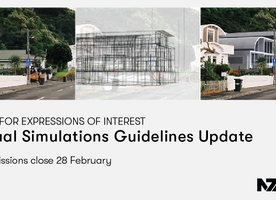
Expressions of interest welcome
Ngā mihi o te tau hou | Happy new year! We have an exciting opportunity for members to kick off …
19 Dec
Meri Kirihimete
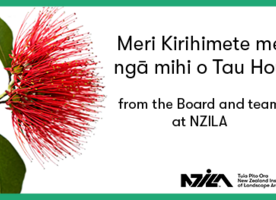
The team is taking a break for the festive season! We'll all be out of the office from 20 December, …
19 Dec
President's Update December 2024

Kia ora koutou, Here we are at the end of 2024. It’s been a busy and challenging year in many …
Events calendar
Full 2025 calendar